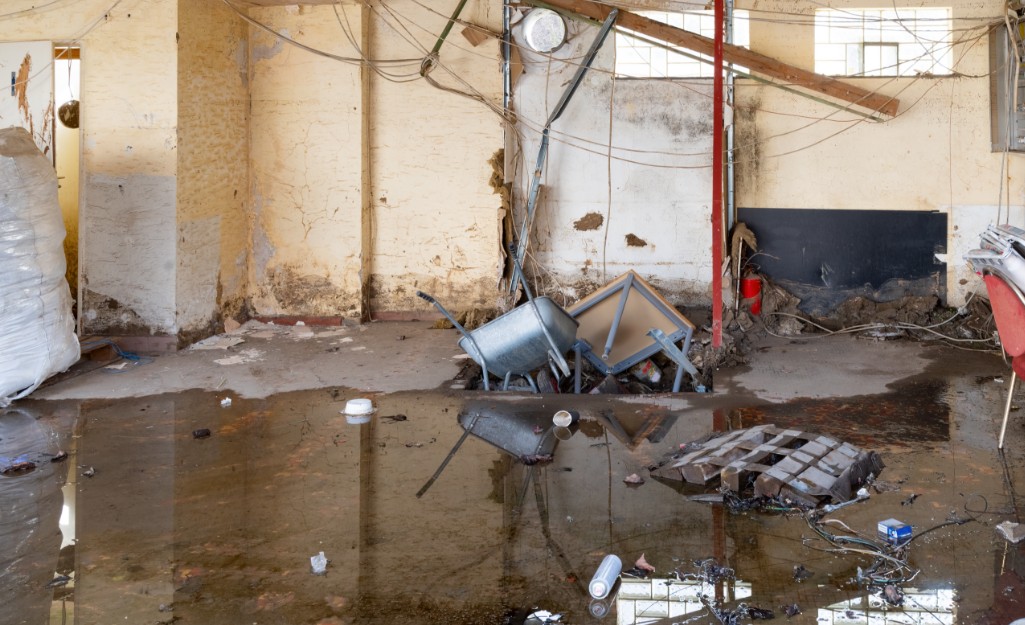Necessary Actions to Comply With for Efficient Water Damages Repair in your house
When faced with water damages in your home, recognizing the essential actions for effective restoration can make all the difference. You need to assess the damage and assurance security prior to tackling the trouble. Quiting the resource of water is crucial, but it's just the beginning. There's a series of activities you should take to protect your home from additional concerns when you've managed that. Let's explore what you must do next.
Evaluate the Damages
The first step is to analyze the damage thoroughly when you discover water damages in your home. Begin by recognizing the source of the water invasion. Check for leakages, ruptured pipelines, or other issues triggering the problem. Next off, analyze the affected areas for visible indications of damage, consisting of bending, discoloration, or mold growth. Do not forget to search in surprise places like behind wall surfaces or under floor covering, as water can leak into these areas unnoticed.Document the damages by taking clear images and notes. This will assist you when reviewing the scenario with your insurance coverage copyright or remediation specialists. Take note of the sort of products impacted, as different products call for different remediation techniques. Ultimately, examine the degree of the damages. Is it comprehensive or minor? Understanding the extent will direct you in determining whether to handle it yourself or call in the specialists for an extra comprehensive repair procedure.

Ensure Safety and security
Prior to you start any type of remediation job, guaranteeing your safety and security is necessary. Evaluate the problem of your home. If the water's deep or if you observe electric risks, don't enter the location. Switch off the electrical power and gas supply to avoid accidents. Use safety equipment like handwear covers, boots, and masks to secure on your own from pollutants or mold.It's essential to remain knowledgeable about your surroundings; watch for slippery surfaces and sharp objects. If the water is from a sewer back-up, treat it as contaminated materials. Maintain youngsters and pets far from influenced locations to avoid exposure.Once you've taken these safety measures, you can continue with the repair procedure. Keep in mind, your safety and security comes initially, and if you're ever uncertain, it's best to speak with a specialist. Taking these steps will certainly help ensure you're prepared to deal with the reconstruction securely and successfully.
Quit the Resource of Water
After ensuring your safety and security, the next step is to quit the source of water. Identify where the leakage is coming from. Maybe a ruptured pipe, a malfunctioning device, or perhaps hefty rainwater entering through a damaged roof covering. If it's a pipes issue, switch off the primary water to your home to avoid further flooding. For devices, disconnect them and turn off their water valves.If the source is outside, like rainwater, attempt to divert it away from your home using sandbags or other obstacles. For small leakages, you could be able to use tape or a sealer momentarily till a professional can repair it. Remember, attending to the resource quickly is important to decreasing damages and avoiding mold and mildew development. As soon as you have actually stopped the water, you'll remain in a much better placement to carry on to the next actions in the restoration process.

Get Rid Of Excess Water
Act promptly to remove excess water, as standing water can lead to extra extensive damage and mold and mildew development. Collect your devices: a wet/dry vacuum cleaner, pails, and towels. If the water is shallow, you can utilize towels to absorb the dampness. For much deeper water, a wet/dry vacuum cleaner is your best choice. See to it to empty the vacuum cleaner regularly to stay clear of overflow.If the water is infected, like from a sewer back-up, use safety equipment, including masks and gloves, to keep yourself secure. When you have actually eliminated as much water as possible, examine for hidden pockets of dampness in edges and under furniture, as these can harbor mold.Don' t neglect to shut off electrical appliances and power outlets in wet areas to stop risks. This preliminary step is essential in decreasing damage and establishing the stage for a successful reconstruction procedure.
Dry and Dehumidify the Area
Once you've gotten rid of the excess water, it's vital to dry and evaporate the location extensively. Beginning by using dehumidifiers efficiently to draw wetness out of the air and prevent mold and mildew growth. Maintain an eye on moisture levels to guarantee the area dries completely.
Get Rid Of Standing Water
To successfully tackle water damages, you need to concentrate on eliminating standing water as rapidly as feasible. Begin by collecting required devices, like a wet/dry vacuum or a pump, depending on the volume of water. If the water is shallow, a vacuum needs to suffice. For bigger amounts, a pump is more efficient. While functioning, make sure to put on safety equipment to keep on your own safe from impurities. As you eliminate the water, pay attention to hidden locations like under furnishings or in corners where water might gather. As soon as you have actually gotten rid of the majority, your space will begin to dry. This step is crucial, as remaining water can lead to mold development and more extensive damage.
Usage Dehumidifiers Effectively
Just how can you properly use dehumidifiers to completely dry and evaporate your room? Beginning by positioning your dehumidifier in one of the most damaged area, preferably where water damages is most serious. See to it to shut all doors and windows to create a closed environment. Activate the dehumidifier and established it to the ideal humidity level, normally around 30-50%. Vacant the water collection tank frequently, or consider making use of a model with a continual water drainage choice for benefit. If feasible, utilize fans to enhance air flow, assisting the dehumidifier job extra efficiently. Keep the dehumidifier running until you're positive that the location is thoroughly dried, stopping mold and mildew growth and extra damage (Smoke Damage Restoration). This step is crucial for reliable water damages repair
Display Moisture Degrees
Tracking humidity degrees is essential throughout the drying process, as it assists ensure your area continues to be complimentary from excess dampness. Spend in a dependable hygrometer to track humidity accurately. find more info Preferably, you desire to maintain degrees between 30% and 50%. You may require to adjust your followers or dehumidifiers to improve air movement if humidity readings rise over this range. Examine the analyses consistently, especially in areas susceptible to wetness, like basements or restrooms. If you observe persistent high humidity, take into consideration boosting air flow or utilizing extra dehumidifiers. Remaining on top of these levels not just speeds up the drying process however additionally protects against mold development, guaranteeing your home keeps secure and comfortable.
Tidy and Disinfect Affected Surfaces

Bring back and Fix Your Home
After cleaning and sanitizing the influenced areas, it's time to restore and repair your home. Begin by evaluating the damages. Check for structural concerns, like deteriorated floors or wall surfaces, and deal with any type of essential repair work. Changing harmed drywall or floor covering is vital for both looks and safety.If your furnishings or items were affected, think about whether they can be restored or need replacement. Clean or properly recover products where possible.Next, paint walls and touch up any areas that need interest. This not only boosts look but likewise secures surfaces from future water damage.Don' t forget more information to examine your plumbing and devices for leakages, making sure every little thing's operating correctly. Consider setting up a dehumidifier to avoid future dampness problems. By taking these actions, you'll recover your home to its previous glory and create a safer living atmosphere.
Regularly Asked Inquiries
The Length Of Time Does Water Damage Reconstruction Generally Take?
Water damages reconstruction typically takes anywhere from a few days to a number of weeks, depending upon the level of the damages (Smoke Damage Restoration). You'll intend to examine the scenario swiftly to decrease further difficulties and ensure correct restoration
Will My Insurance Coverage Cover Water Damage Remediation Prices?
Your insurance could cover water damages restoration prices, but it relies on your policy. Inspect your insurance coverage details and call your insurance agent to clarify what's consisted of and what you require to sue.
Can I Handle Water Damage Reconstruction Myself?
You can manage water damage reconstruction yourself, however it's crucial to evaluate the circumstance initially. You might want to call experts if it's considerable. Always focus on safety and guarantee you've got the right tools.
What Are the Indications of Hidden Water Damage?
You could discover indications of concealed water damages like distorted walls, moldy odors, or discoloration. If your floors really feel spongy or you spot mold, it's time to explore even more before the scenario worsens.
How Can I Prevent Future Water Damages in My Home?
To avoid future water damages in your house, you need to regularly inspect pipes, seal cracks, preserve seamless gutters, and assurance proper drainage. Installing a sump pump and wetness barriers can additionally help keep your area completely dry. When you discover water damage in your home, the very first step is to examine the damages extensively. Act promptly to remove excess water, as standing water can lead to more considerable damages and mold and mildew development. To successfully take on water damages, you need to concentrate on removing standing water as promptly as feasible. As you remove the water, pay focus to hidden areas like under furnishings or in edges where water could gather. Water damages remediation typically takes anywhere from a hop over to here couple of days to a number of weeks, depending on the extent of the damage.
 Alexa Vega Then & Now!
Alexa Vega Then & Now! Christina Ricci Then & Now!
Christina Ricci Then & Now! Mackenzie Rosman Then & Now!
Mackenzie Rosman Then & Now! Tonya Harding Then & Now!
Tonya Harding Then & Now! Rossy de Palma Then & Now!
Rossy de Palma Then & Now!